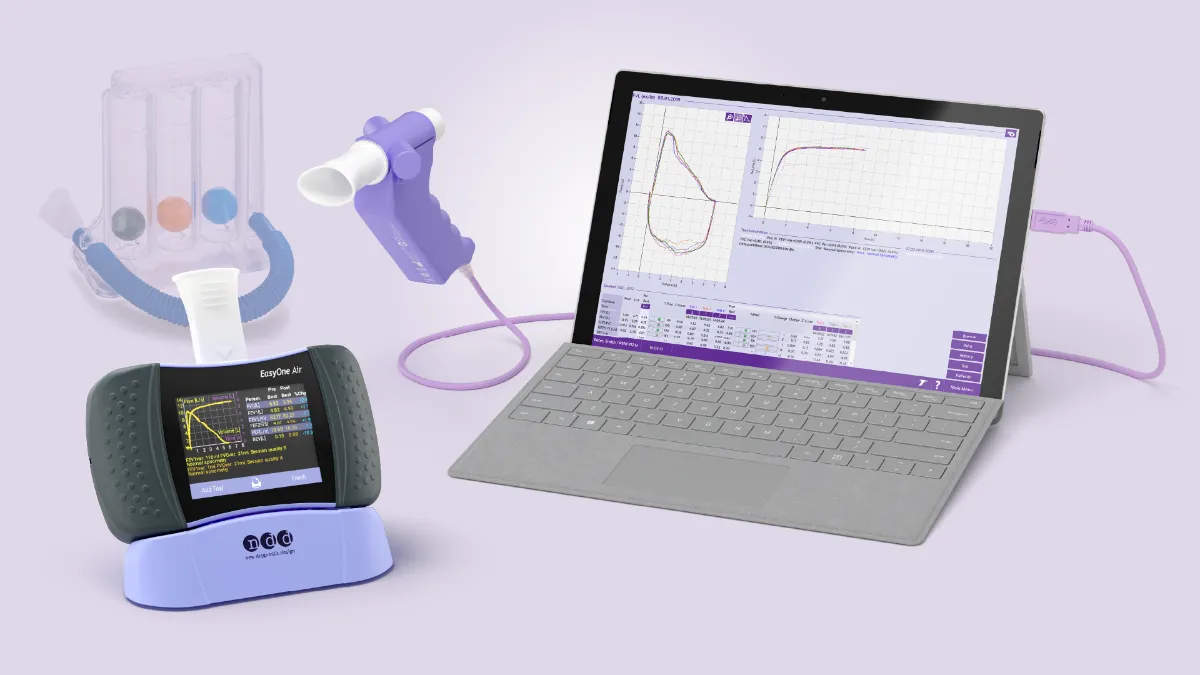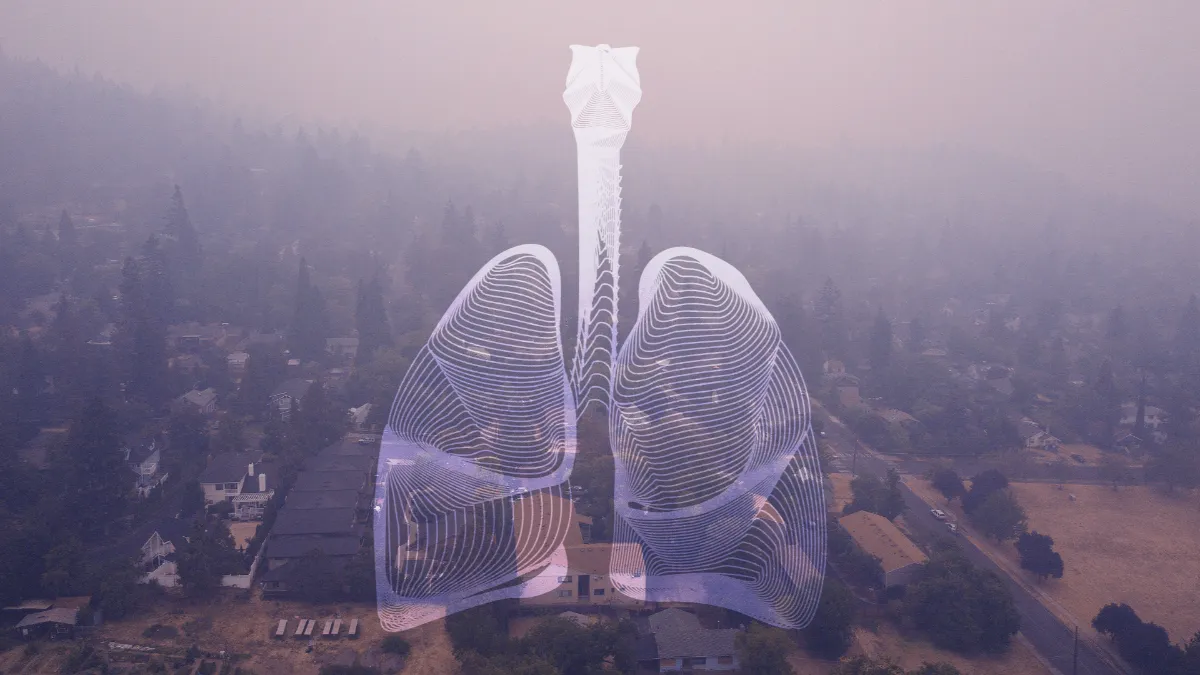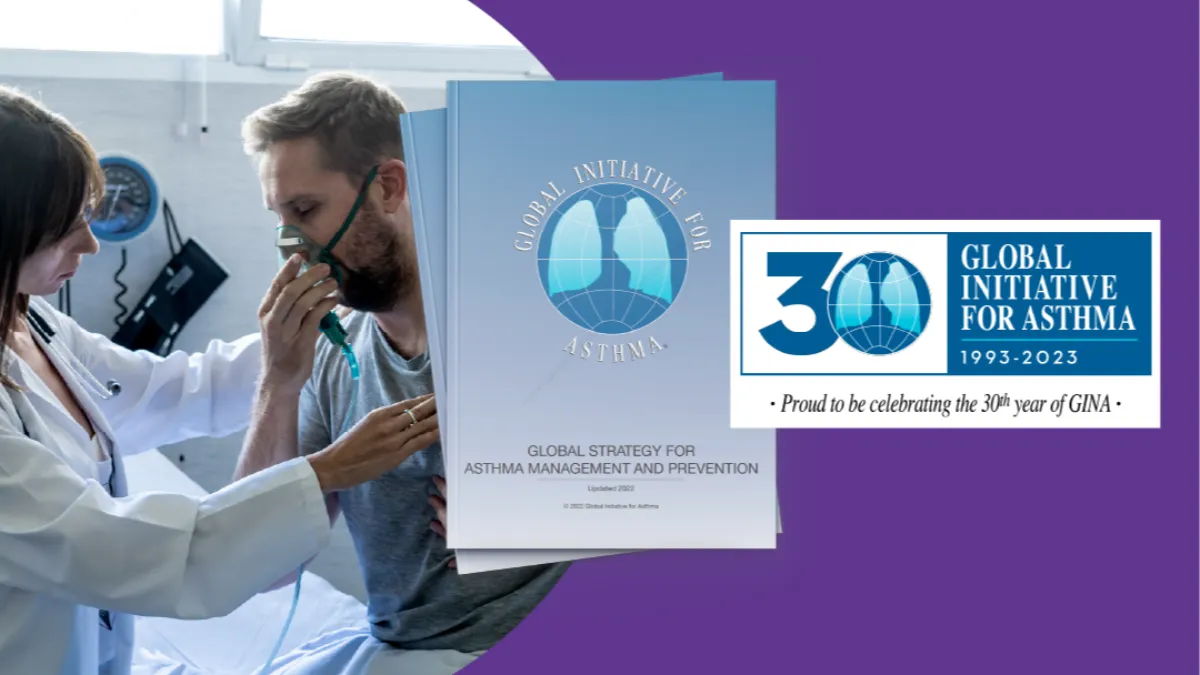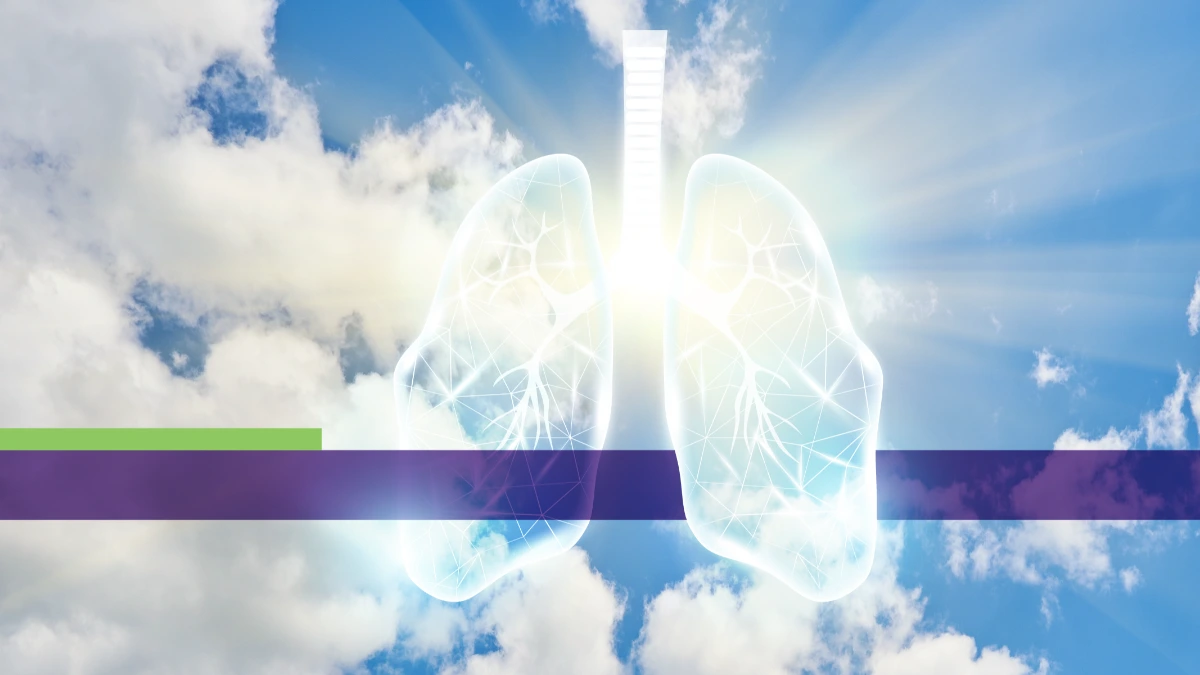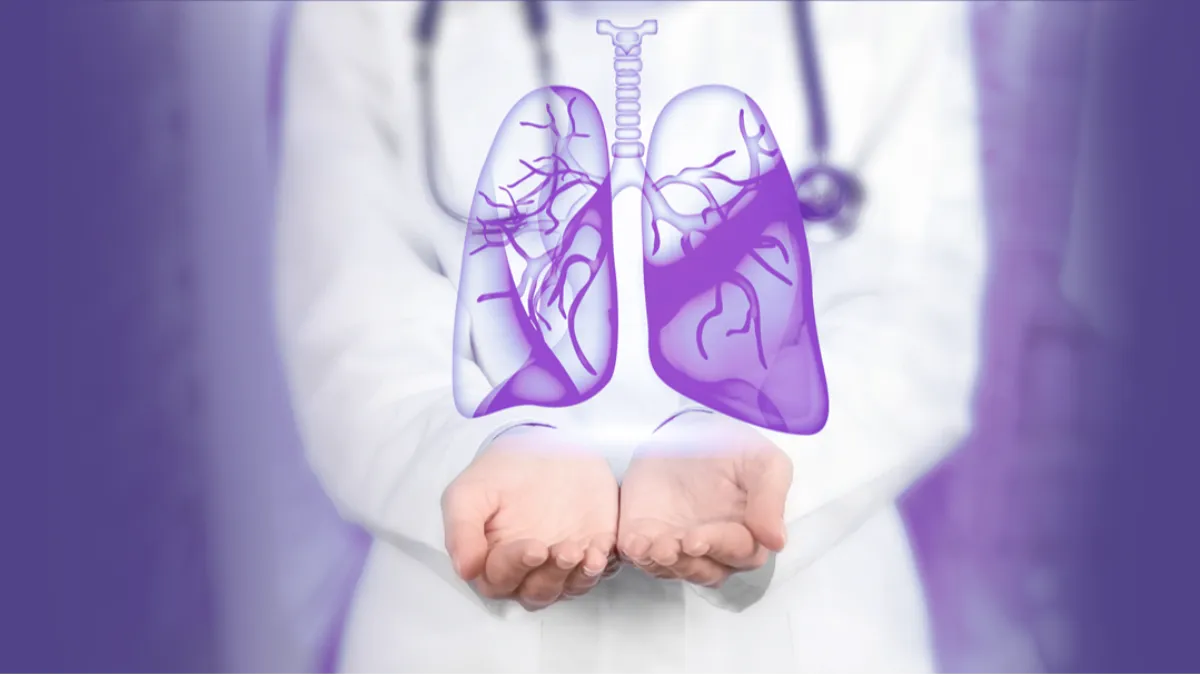Exercise-induced asthma does not have to impair quality of life

The summer is over, school is starting back up, and many children will be exercising at school, sports or in competitions. With that, some children may experience the discomfort of exercise-induced asthma (EIA) for the first (and hopefully last!) time. Medically known as exercise-induced bronchoconstriction (EIB), this term describes the phenomenon that occurs when a person experiences respiratory symptoms in the acute moments following exercise. While the colloquial term — exercise-induced asthma — refers to this phenomenon as “asthma,” EIB is not actually considered clinical asthma. Asthma, which affects hundreds millions of people globally,1 is a chronic condition that causes respiratory symptoms and impaired lung function. EIB, on the other hand, is the acute occurrence of asthma-like symptoms triggered by exercise and usually environmental conditions. While approximately 40 to 90% of people who experience EIB have a clinical diagnosis of asthma, not everybody who experiences EIB has asthma; conversely, not every person who has asthma will experience exercise-induced bronchoconstriction.2
Exercise-Induced Bronchoconstriction: Symptoms and Mechanism #
Triggered by exercise and causing respiratory symptoms, including difficulty breathing, chest tightness, wheezing, and cough, exercise-induced bronchoconstriction is uncomfortable, especially for a child experiencing it for the first time; fortunately, it’s usually transient and reversible.1 EIB is not necessarily caused directly by exercise but by what happens in our airways during exercise. When we exercise, there is water loss and temperature changes in our airways, which forces our respiratory system to warm up and add moisture to the air in our lungs, leading to the increased respiration rate seen in people experiencing EIB.1 In turn, this results in the cells shrinking, as well as a long cascade of effects, which ultimately manifests as airway narrowing (bronchoconstriction) and discomfort in the immediate aftermath of exercise.1 Since water loss and increased respiration play important roles in the pathophysiological mechanism of EIB, environmental factors including air temperature, air pollution, and humidity can increase the likelihood somebody will experience EIB.3 Without treatment, EIB usually lasts about 30 to 90 minutes according to the American Thoracic Society’s Clinical Practice Guideline on Exercise-Induced Bronchoconstriction.3
Exercise-Induced Bronchoconstriction: Diagnosis and Treatment #
While not every person may experience the same symptoms, there are some key things to look out for in children who are exercising: Kids may get winded or tired more easily during exercise or they may cough after coming inside after being active outdoors. Parents, teachers, and coaches should be on the lookout for these symptoms. In the case of kids who have already been diagnosed with EIB, a responsible adult should ensure the child performs their prescribed care plan prior to exercise or when symptoms happen. In the case of kids who aren’t diagnosed, and though symptoms related to EIB are often distinct, symptoms alone in the aftermath of exercise are not sensitive or specific enough to diagnose somebody with EIB.
To make a proper diagnosis, spirometry is required: An EIB diagnosis requires what’s called an “exercise challenge” where a patient vigorously exercises in the clinic before performing spirometry.3 This test is used to both diagnose EIB and, in the event somebody is diagnosed with EIB, grade the level of severity.3 For a diagnosis to be made, forced expiratory volume in the first second (FEV1), one of the most commonly evaluated spirometry parameters, must be measured and diminished at several temporal increments (5, 10, 15, and 30 minutes) after exercise at least twice.3 EIB is graded as mild, moderate, or severe depending on the extent of FEV1 decline compared to pre-exercise levels.3
Regardless of severity, a new diagnosis can be challenging and frightening, especially for children and their parents. With a diagnosis, though, comes the hope of treatment, which will hopefully ameliorate most EIB symptoms. Fortunately, in the case of EIB, there are both pharmacologic and nonpharmacologic treatments. One of the most highly effective pharmacologic approaches is short-acting bronchodilators, such as albuterol, which are given in the minutes before exercise and usually prevent EIB for 2-4 hours.3 Around 15-20% of people may not respond to short-acting bronchodilators, however.3 For individuals who do not respond to short-acting bronchodilators and also for those who use short-acting bronchodilators daily, the American Thoracic Society strongly recommends the use of inhaled corticosteroids (ICS), which may take 2-4 weeks to demonstrate efficacy. It can be frustrating to be on medications for a few weeks before knowing if they are effective. To prevent the additional frustrations that come with optimizing a care plan, it can be really helpful to know how likely it will be that a treatment will be effective. One study sought to answer the question of whether a single dose of ICS was enough to predict the long-term efficacy of this therapeutic approach in children with EIB, which they found to be the case; the authors concluded that their study could support clinicians in providing personalized management of EIB in childhood asthma.4
Exercise-Induced Bronchoconstriction: Prevention Tips #
While pharmacologic approaches like short-acting bronchodilators and inhaled corticosteroids may be effective in preventing the onset of EIB, the American Thoracic Society also recommends multiple nonpharmacologic approaches for prevention. One approach is to induce a “refractory” period for 2-4 hours by performing a moderately vigorous warm-up for 10-15 minutes before planned exercise or competition.3 Since this may not be effective for everybody, various types of warm-up have been evaluated, with the conclusion being that high-intensity interval and variable intensity preexercise warm-ups were the most effective and consistent in attenuating EIB.5
Further, due to the impact of air temperature, humidity, and pollutants play in triggering EIB, the ATS recommends the use of face covering for those who are more prone to EIB induced by cold weather, though this is a weak recommendation compared to most others as the evidence supporting this recommendation is of lower quality.3
Conclusion #
Exercise-induced bronchoconstriction can absolutely limit quality of life for individuals when not treated or well-controlled. Ultimately though, for children and adults alike, there are many highly effective approaches — pharmacologic and nonpharmacologic — to prevent and manage EIB. The first priority is getting an accurate diagnosis, which then allows for a clinician to work closely with the patient to develop the optimal care plan for the individual. Most promisingly, once well-controlled, studies have shown that EIB does not limit even elite athletes.6 Exercise is a great thing for everybody, especially children, and should be encouraged, but in the case of children who demonstrate respiratory symptoms, EIB should be well controlled.
Gerow M, Bruner PJ. Exercise-Induced Asthma. In: StatPearls. StatPearls Publishing; 2023. Accessed August 22, 2023. http://www.ncbi.nlm.nih.gov/books/NBK557554/ ↩︎ ↩︎ ↩︎ ↩︎
Gerow M, Bruner PJ. Exercise-Induced Asthma. In: StatPearls. StatPearls Publishing; 2023. Accessed August 22, 2023. http://www.ncbi.nlm.nih.gov/books/NBK557554/
Parsons JP, Hallstrand TS, Mastronarde JG, et al. An Official American Thoracic Society Clinical Practice Guideline: Exercise-induced Bronchoconstriction. Am J Respir Crit Care Med. 2013;187(9):1016-1027. doi:10.1164/rccm.201303-0437ST ↩︎
Parsons JP, Hallstrand TS, Mastronarde JG, et al. An Official American Thoracic Society Clinical Practice Guideline: Exercise-induced Bronchoconstriction. Am J Respir Crit Care Med. 2013;187(9):1016-1027. doi:10.1164/rccm.201303-0437ST ↩︎ ↩︎ ↩︎ ↩︎ ↩︎ ↩︎ ↩︎ ↩︎ ↩︎ ↩︎
Hengeveld VS, Lammers N, van der Kamp MR, van der Palen J, Thio BJ. Can the response to a single dose of beclomethasone dipropionate predict the outcome of long-term treatment in childhood exercise-induced bronchoconstriction? Pediatr Allergy Immunol Off Publ Eur Soc Pediatr Allergy Immunol. 2022;33(6):e13808. doi:10.1111/pai.13808 ↩︎
Stickland MK, Rowe BH, Spooner CH, Vandermeer B, Dryden DM. Effect of warm-up exercise on exercise-induced bronchoconstriction. Med Sci Sports Exerc. 2012;44(3):383-391. doi:10.1249/MSS.0b013e31822fb73a ↩︎
Jayasinghe H, Kopsaftis Z, Carson K. Asthma Bronchiale and Exercise-Induced Bronchoconstriction. Respir Int Rev Thorac Dis. 2015;89(6):505-512. doi:10.1159/000433559 ↩︎
Written by

Tré LaRosa
Tré LaRosa is a consultant, scientist, and writer in the Washington, DC area with extensive experience working in research (basic, translational, and clinical) and on patient-reported outcomes. He has also written extensively on neuroscience, pulmonology, and respiratory conditions, including from the patient perspective. He enjoys learning, reading, writing, spending time outdoors, and telling everybody about his mini golden retriever, Duncan.

